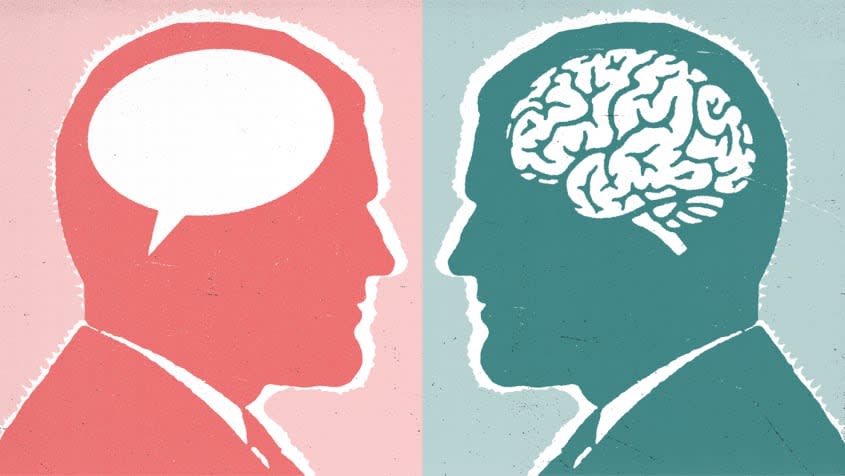When therapy-speak enters the real world

Over the past few years, discussing mental health and seeking professional help has become more destigmatized. And with that, some therapeutic terms have trickled into the lexicon, and a new mode of conversation known as therapy-speak has emerged. People are "setting boundaries," practicing "self-care" and identifying their "attachment styles" all over social media and in real life. Gaslighting has become so commonly used that it was Merriam-Webster's word of the year in 2022. But while learning to advocate for yourself is important, experts warn that some people are weaponizing these terms without understanding what they mean.
Some point to alleged text messages between actor Jonah Hill and his ex-girlfriend, surfer Sarah Brady, as an example of the misuse of therapy-speak in action and the potential harm it can cause. In the texts, Hill outlined conditions for dating him framed as "boundaries," but experts have pointed out that healthy boundaries are not supposed to be one-sided. Professionals have noted that many of these words are misunderstood and lose nuance in gaining popularity.
How did psychological jargon make its way into everyday conversation?
One reason why the "language of mental health is burgeoning" could be because "actual mental health is declining," Katy Waldman mused in The New Yorker in 2021. Since the peak of the Covid-19 pandemic, reports have indicated an increase in depression and anxiety, particularly among young people. The U.S. Surgeon General released an advisory warning of an epidemic of loneliness in the country. More people have been seeking out help, and publicly sharing about being in therapy has become more mainstream. According to Waldman, "A growing awareness of mental illness may be prodding these numbers even higher, although our everyday lexicon still lags behind the science."
Waldman also noted that the "language of the therapist's office has long flooded popular culture." Words like "hysteria," "shell shock" and "inner child" reflect the "psychoanalytic approaches of their day," she explained. People used these older words for similar reasons as therapy-speak is used today, Dr. Sheri Jacobson, a retired psychotherapist, told Refinery 29. "What they have in common is creating a dichotomy between 'us' and 'them' — a bit of black-and-white, polarising thinking." The words become a way to label behavior unacceptable and "separate and maybe preserve the self," Jacobson added. "There are some themes there about in-group/out-group going on."
Social media has also had a hand in nudging psychological jargon into the zeitgeist, with "Instagram accounts and other social media communities sharing mantras and advice advocating for self-actualization," Rebecca Feinstein wrote for Bustle. Therapists like Nadia Addesi and TherapyJeff have built large TikTok followings by offering "tips for struggling with anxiety, self-esteem and people-pleasing."
What's the downside to using therapy-speak in interpersonal relationships?
There's a lot of good that comes from openly discussing mental health. Therapy becoming more mainstream and therapy-speak can help bring "more clarity and understanding to things that people have struggled with forever and often in isolation," psychotherapist Ester Perel told Vanity Fair. But, Perel noted, there's a "paradox." The overemphasis on '''self-care' aspect" is ultimately "making us more isolated and more alone because the focus is just on the self," she said. The focus tends to ignore the "mutuality of relationships." There's a risk that "you lose all nuance" by "trying to elevate your personal comments and personal experience." The popularization of therapy-speak puts "clinical terminology into the hands of non-clinically trained people who then weaponize it," she added. Therapy is a "highly relational, nuanced and contextual conversation" and is "very different from what you get on TikTok or IG or your friends in armchairs."
People are also using therapy-speak to self-diagnose the people in their lives, "usually as a way to circumvent your own responsibility in a conflict situation," psychotherapist Nicholas Balaisis wrote for Psychology Today. The words might "feel really insightful in the moment," but "to assume its correctness or weaponize a pseudo-assessment in a conflict" doesn't usually lead to a solution. More often, they validate one person's experience and justify their decision to disengage. The worst-case scenario can lead to "increased resistance to communication and empathy, thus further stalling relational improvement."

